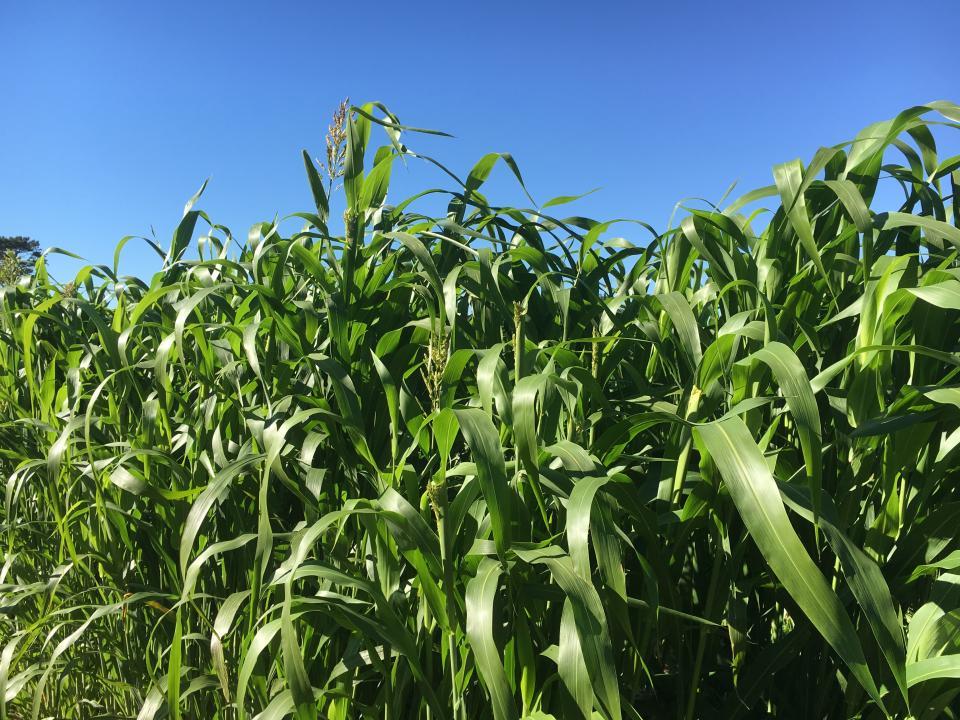
Pasture and Forage Minute: Late Summer Planting and Regrowth Concerns
Late Summer Planting of Alfalfa
Do you have plans for a late summer planting of alfalfa? The time for getting this done is rapidly approaching.
Irrigated alfalfa planted in late summer establishes well. The same is true for dryland acres where moisture is available. Be sure to plant early enough though, so alfalfa has six to eight weeks between emergence and a hard freeze to develop good cold tolerance. In northwest Nebraska or southern South Dakota, you probably need to plant by the second to third week of August, but only if you also have moisture present for seeds to germinate. Any delay is likely to cause poorer stands. In southeast Nebraska, you can plant as late as Labor Day, but earlier is better. In central Kansas, alfalfa can be planted as late as mid-September.
Proper seedbed preparation is crucial for late summer plantings. Good seed-to-soil contact and weed control are critical, both when seeding into tilled, prepared seedbeds or into wheat stubble. Conserve soil moisture whenever possible and put extra effort into getting a firm seedbed. Extra packing often gives faster and more uniform emergence.
Whenever seeding alfalfa in late summer, be especially wary of grasshoppers. They sometimes seem to come from nowhere, and they love to eat new alfalfa seedlings. Spray field margins with insecticides before planting if necessary.
One important caution — never plant into dry soil. Late summer plantings into dry soil may lie dormant for several weeks until it rains. Too little time then will remain for seedlings to develop good cold tolerance. Many failures occur because fall rains come too late or not at all.
With some help from Mother Nature, good hay is just a spring away.
Remove Bales Soon After Harvest
We are in the full swing of haying season here in Nebraska. However, I see many bales being left out in the middle of hay fields.
Bales and stacks of hay left in the middle of fields must be removed at some point. While it may not matter too much for those bales to sit for a while in the middle of the field after the final cutting for the year, delaying removal can be harmful when we are in haying season and more harvests are expected. Directly under the bale or stack, plants are often killed when covered up for more than a week or two. This may not hurt your yield too much but makes for a great place for weeds to get started in your field.
Most of the damage, though, is due to wheel traffic on the regrowth. Studies have shown that when fields are dry, plants driven on before regrowth occurs will yield about 5% to 7% less at the next cutting. This number only increases if you wait to remove bales. Just seven days after cutting, when regrowth shoots had started to grow, yield was reduced over 25% and fewer of these plants survived. Worse yet is removing bales when fields are wet. When soils are wet wheel traffic causes more soil compaction. When this happens, yield loss typically exceeds 30%.
These studies emphasize the benefits of baling and removing bales from hay fields as quickly as possible after cutting, as well as minimizing driving on wet soils. They also suggest that following the same trail when removing bales or stacks from fields can reduce losses from wheel tracks by limiting the total area damaged. To remove bales after harvest, hay fields must be driven on, but you can lessen damage by controlling where, when and how often you drive on them.
Managing Summer Annual Regrowth
Summer annual crops like forage sorghum, sudangrass and sorghum-sudan hybrids may have been grazed or harvested once already this year. With adequate moisture, these crops have the potential to grow back and produce another harvest opportunity but need to be managed correctly to avoid potential hazards.
Sorghum and sudangrass species have the potential to build toxic levels of prussic acid in new shoots. This goes for regrowth as well, so proper management when grazing is essential. New growth needs to be 15-18 inches high in sudangrass and 18-24 inches high in sorghum/sudan hybrids before grazing can safely occur. In regrowth, new shoots can come out at different points from the remaining stalk, so make sure to measure the new growth’s actual height, not just from the ground up.
One nice thing about prussic acid is it converts to a gas in the leaf soon after harvest. While this doesn’t do grazing animals any good, sorghum species cut for hay can dissipate a majority of prussic acid before baling. Similarly, between harvest and the ensiling process, most sorghum-sudan hybrids harvested for silage have lowered prussic acid to safe levels by feed-out.
With heat and dry conditions creeping back across the state, all stressed summer annual grasses — including our millet species — have the potential to accumulate nitrates, especially when drought-stressed. Unlike prussic acid — which dissipates when cut for hay — nitrates stick around, so whether grazing or haying, cut high to avoid portions of the plant where concentrations are highest. Harvesting plants that are at high nitrate risk for silage may be the safest option, as the ensiling process naturally reduces nitrate levels. However, a forage nitrate test should be taken before feeding to ensure levels are safe.
Summer annuals are great forage opportunities, especially when multiple harvests are available. With proper management, the risk of prussic acid and nitrates can be mitigated so you can get the most out of these summer forage kings.
Online Master of Science in Agronomy
With a focus on industry applications and research, the online program is designed with maximum flexibility for today's working professionals.
